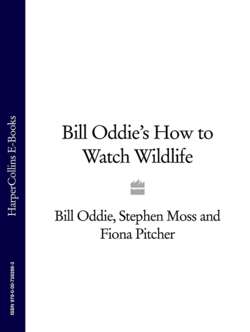Читать книгу Bill Oddie’s How to Watch Wildlife - Stephen Moss - Страница 18
Bill's top tip
Оглавление_ If you really want to get the best views of the floodlit feeding, make sure you turn up at least an hour beforehand: the hides can get very crowded and people at the back don’t always get a good view.
Nothing matches the spectacle of really wild ducks, geese and swans. The winter months are the best time to experience this: there are large numbers of wildfowl in their natural habitat, providing great close-up views, often from the comfort of a heated hide. It’s a great way for adults and children to learn how to identify birds – ducks (well, drakes – it is they who sport the colourful plumage) are an easy group to start with – and also to observe aspects of their behaviour, such as feeding, flocking and roosting. The late afternoon roosts are the most spectacular, and the WWT puts on regular floodlit feeding sessions at several of its centres.
The nine WWT sites are strategically placed around the country to attract the greatest range of visiting wildfowl and other birds. They breed in Arctic Europe and Siberia and come here for the winter primarily because our mild winter climate enables them to find food easily, but also because we have long protected them against unregulated shooting.
The best place to start is Slimbridge, on the Severn Estuary between Bristol and Gloucester, near the M5 motorway. Stroll through the world’s most diverse collection of captive wildfowl, take photographs, or simply admire their plumage and behaviour. The hides look out over the marshes and give reliable (if sometimes distant) views of many wildfowl species, notably Bewick’s swans and white-fronted geese. The swans have flown from Siberia tundra, and with practice can be individually identified by their yellow and black bill pattern. There are also large flocks of Bewick’s and whooper swans at Welney on the Ouse Washes, where the birds are fed at dusk and can be watched under floodlights.
Martin Mere, in Lancashire, and Caerlaverock, on the Scottish side of the Solway Firth, are both home to large numbers of wild geese; arguably as impressive as the swans, and often much more numerous. Three other centres, Arundel in West Sussex, Castle Espie in Northern Ireland, and Washington in County Durham, provide excellent close-up views of a variety of breeding and wintering birds, and are well worth a visit if you are in the area. In Wales, the National Wetlands Centre near Llanelli is pioneering new ways of working with wetland wildlife, and is home to a growing population of little egrets.
Finally, the most unusual WWT venue of all is the London Wetland Centre. Situated on a site alongside the Thames at Barnes and built from scratch on the site of some disused reservoirs, it more than makes up in variety and interest what it lacks in size. The star attraction is the wintering bitterns, which have turned up regularly in the past couple of winters, though they can be very elusive. Still, if you get fed up with waiting, you can always take refuge in the excellent café!
